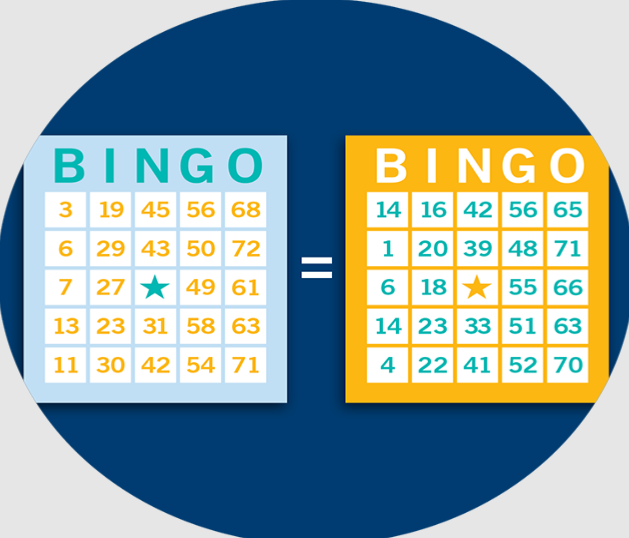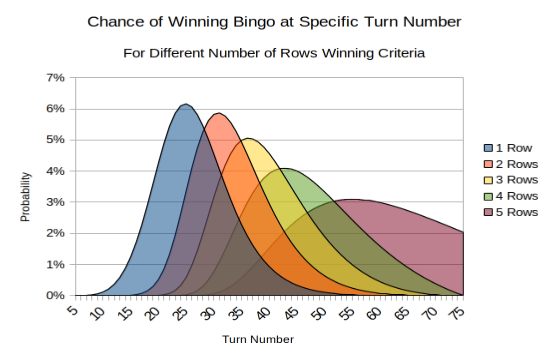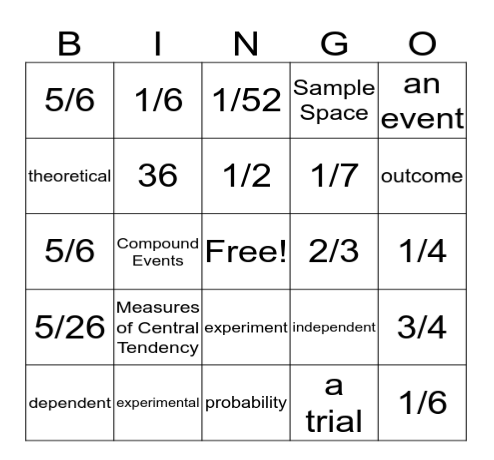The probability varies based on several factors, including the number of cards played, the number of players, and the specific game variations.
Overview of Bingo Rules and Variations
The game of bingo, while simple in concept, carries various rules and structures depending on the version being played. Understanding these nuances is crucial for anyone calculating probabilities and devising strategies.

Traditional Bingo: The Foundation
In traditional bingo, players have cards with numbers arranged in a grid. A caller randomly draws and announces numbers, and players mark the corresponding spaces on their cards. The objective is to form a specific pattern (like a line) and shout “Bingo!” to win. The straightforward nature of this game forms the basis for more complex variations, each affecting the overall winning odds.
Bingo Game Variations
Different types of bingo alter the standard gameplay, thereby influencing winning probabilities. Here are a few common variations:
- 75-Ball Bingo: Popular in North America, this variation uses 75 numbers and a 5×5 card. The central space is often “free,” which players can mark off at the start. The game’s winning patterns can range from simple lines to more complex designs, increasing the difficulty based on the pattern’s complexity.
- 90-Ball Bingo: This UK favorite uses 90 numbers and tickets consisting of three rows and nine columns. Players can win by completing one line, two lines, or a full house (all three lines), with each stage increasing in difficulty and reward.
- 80-Ball Bingo: A middle ground between its 75-ball and 90-ball counterparts, this version employs an 80-number pool and 4×4 cards. It introduces more pattern varieties, each with distinct probabilities of being achieved.
- 30-Ball Bingo: Also known as ‘speed bingo,’ this fast-paced variant features 30 numbers and a 3×3 card, making for quicker games. The winner must fill their entire card, and with fewer numbers in play, game sessions are notably shorter, and win occurrences can feel more frequent.
Impact of Variations on Winning Chances
Every variation comes with unique odds. For instance, winning a game of 75-ball bingo generally depends on the pattern complexity. Simpler patterns like single lines may have higher probabilities (e.g., 1 in 30) compared to complex patterns like ‘blackout’ or ‘coverall’ with odds that can go as extreme as 1 in several thousand, often taking numerous calls to achieve.
In 90-ball games, the three stages (one line, two lines, full house) have progressively challenging odds. The initial one-line win might have favorable odds (like 1 in 10), considering more potential winning combinations, but achieving a full house is statistically harder, possibly 1 in 100 or more based on the number of tickets in play.
The key takeaway is that each bingo variation requires strategic understanding. Knowing the game type, card layout, number of players, and desired patterns significantly influences one’s approach and expectation management. Therefore, players looking to increase their winning chances must choose their games wisely, considering both the odds and their comfort with the game’s pace and style.
Mathematics in Bingo: Understanding Odds
Bingo is a game of chance, and understanding the mathematical underpinnings is essential for anyone looking to grasp the likelihood of winning. The probabilities can shift based on several factors, including the number of cards in play, the players participating, and the specific game variation.
Fundamental Principles of Probability
At its core, probability is a way of quantifying the likelihood of an event happening. In bingo, several fundamental principles come into play:
- Randomness: Bingo relies on random number generation, whether it’s through a physical draw of numbered balls or digital means. Each number has an equal chance of being called, which keeps play fair and unpredictable.
- Independence: Each number draw is an independent event. This means the outcome of a previous draw does not influence future ones. For instance, if number “7” is called, it doesn’t increase or decrease the chance of “8” being called next.
- Combination Calculations: The probability of achieving a winning bingo pattern is based on combinations. For example, in a standard game, calculating the likelihood of forming a specific pattern involves understanding how many ways the pattern can occur on your card(s).
Calculating Odds in Different Scenarios
The complexity of bingo’s mathematics can deepen when considering multiple cards and players. Here’s how to break down these scenarios:
- Single Card Probabilities: If you have one card in a typical 75-ball game, your chance of winning is one in the total number of cards in play. If 100 cards are in play, your odds are 1 in 100.
- Multiple Cards: Holding multiple cards improves the probability of winning. With ten cards in a game of 100, your chances become 10 in 100, or 10%. However, the cost increases as well, as purchasing multiple cards requires a higher initial investment, affecting your budget.
- Player Influence: More players mean more cards in play, which decreases your winning chances. In a scenario with 20 players, each holding five cards in a 100-card game, you’re competing against 99 other cards.

Understanding House Edge and Payouts
It’s also vital to understand the ‘house edge,’ a term used in gambling to represent the statistical advantage the game operator has over the players over time. In bingo, the house edge can be influenced by various factors like prize structures, the number of players, and operational costs. For example, if a bingo game collects $500 from participants but allocates only $450 for prizes, the house edge derives from keeping the $50 difference, ensuring the game’s profitability.
In conclusion, grasping the mathematics in bingo isn’t just about knowing the odds; it’s about understanding how these odds are influenced by game structure, participation, and financial factors. Strategic players consider all these aspects and balance their approaches, optimizing for enjoyment, cost-effectiveness, and, ideally, a higher probability of winning.
Key Factors Influencing Bingo Outcomes
In the realm of bingo, various elements can sway the odds, affecting every player’s chances of securing a win. Recognizing these factors can guide players in making informed decisions, from selecting which games to play to understanding how each component can change the game’s dynamic.
Number of Players: Crowded Field, Tougher Competition
The more participants in a bingo game, the stiffer the competition. This scenario is a straightforward mathematical situation; if you’re playing with ten people, your chances of winning are significantly higher compared to playing with hundreds. For instance, if there are 100 cards in play and you own 5 of them, your odds of winning are 5 in 100, or 5%. If the number of cards in play jumps to 500, your winning probability drops to 1%.
Game Variation: Different Rules, Different Odds
Bingo comes in several variations, including 75-ball, 80-ball, and 90-ball games, each with its unique card layout and winning patterns. These differences inherently affect probabilities. For example, achieving a full house in 90-ball bingo is more statistically challenging than marking off a single line, thereby influencing the strategy a player might employ.
The Role of Jackpots: High Reward, Lower Chances
Games offering progressive jackpots or exceptionally high rewards can attract a larger pool of players, effectively diminishing individual winning odds. The allure of a substantial jackpot can bring in hundreds or even thousands of players, making the probability of one person winning quite slim. For instance, in a scenario with a $10,000 jackpot, attracting 1,000 players, each buying 5 cards, a single player’s odds plunge dramatically compared to standard games.
Venue and Platform: Location Matters
Whether you’re playing in a physical bingo hall or online can also influence your success rate. Online platforms may host thousands of international players, impacting your odds. In contrast, local bingo halls may offer a more controlled environment with limited participants, slightly elevating your chances of winning.
Financial Strategy: Balancing Cost and Opportunity
Bingo is not just a game of chance but also one of financial strategy. Buying more cards increases your odds but at a higher cost. Players need to balance their budget with the number of cards they purchase. For instance, if each card costs $5, buying 20 cards will set you back $100, a significant amount for most. Is the potential win worth the investment? That’s a critical question players need to ask.
Understanding these key factors provides players with a clearer picture of what they’re up against in a game of bingo. While luck is a prevailing element, being aware of how these various factors influence the game can lead to more informed, strategic decisions, enhancing the overall gaming experience.
Strategic Play: Increasing Winning Chances
While bingo is undoubtedly a game of chance, players can employ strategies to enhance their possibilities of winning. These tactics range from how you manage your finances to the way you select your games, all playing a part in optimizing your approach for better outcomes.
Smart Card Selection: A Game of Numbers
One approach to increasing your chances involves careful card selection. Some seasoned players advocate for the “Granville Strategy,” formulated by financial writer Joseph E. Granville. This method suggests choosing cards with a good spread of numbers, increasing the chances that you’ll have a card with the called number. Opt for cards with:
- A balance of high and low numbers
- An equal number of odd and even numbers
- Numbers that end with different digits
By diversifying the numbers, you cover a wider range, which, according to Granville’s observations, might increase your chances of a hit.

Play More Cards, But Wisely
Conventional wisdom suggests that buying more cards heightens your winning probability. If there are 100 cards in play and you hold 5, your chances are 5%. Owning 10 cards would theoretically double your chances to 10%. However, this tactic requires a careful balance with your budget. If each card costs $1, a desire to play 30 cards means you’re investing $30 in each game. Players need to evaluate the potential return on investment and decide if the strategy aligns with their financial comfort and gaming enjoyment.
Timing and Attendance: When Less is More
Playing bingo when attendance is low is another strategic approach. Fewer players mean less competition, inherently boosting your odds of winning. This strategy could involve playing on weekdays or during off-peak hours, depending on whether you’re playing online or at a physical venue. The key is understanding the dynamics of the playing field.
Selective Game Participation: Choose Wisely
Not all bingo games are created equal. Some games offer big jackpots, while others provide better winning odds. Experienced players often scout for games that strike a balance between a worthwhile prize and a reasonable probability of winning. This might mean passing on the mega-jackpot games with thousands of players and instead participating in smaller games that offer decent payouts but with significantly higher winning odds.
Staying Informed: Knowledge is Power
Lastly, staying informed about the bingo landscape can work in your favor. This involves understanding rule changes, being aware of special promos, or even knowing when new platforms or games launch. Players who keep their fingers on the pulse of the bingo world can leverage this information, timing their play for the most advantageous moments.
In conclusion, while there’s no foolproof strategy to guarantee a win in bingo, several tactical moves can increase your winning chances. It’s about playing smart, not just hard, and making informed decisions based on comprehensive understanding and strategic considerations.
Player Perspectives: Real-world Probability
The theoretical odds in bingo, as in many games of chance, can often stand in stark contrast to real-world experiences. Players find that actual gameplay can differ greatly from statistical expectations due to various factors, from the venue’s atmosphere to the unpredictable nature of luck.
The Human Factor: Emotional and Psychological Aspects
In the realm of bingo, emotional dynamics play an unexpectedly significant role. The excitement, tension, or even the camaraderie among players can greatly influence a player’s experience and perception of their winning odds. For some, the thrill of the near-win, a concept supported by psychologists, is just as important as an actual victory.
- Stress and Decision Making: Under stress, players may make hasty decisions, like purchasing more cards than they can manage or afford, which technically could increase the odds of winning but practically leads to confusion and missed opportunities.
- The Gambler’s Fallacy: This is the mistaken belief that if something happens more frequently than normal during a given period, it will happen less frequently in the future, or vice versa. For instance, after many losses, players might feel a win is “due,” although the odds have not improved.
Luck and Superstition: Unquantifiable Variables
Many bingo players bring a component of superstition to their gameplay, which, while not affecting the actual odds, significantly impacts their experience of the game.
- Lucky Charms and Rituals: Some players swear by lucky charms or specific rituals to increase their odds, such as using a lucky dauber or sitting in a “lucky” seat. These superstitions provide comfort and a sense of control over the uncontrollable, though they don’t alter actual probabilities.
- Perception of Luck: Players often attribute wins to luck, an external force they feel contributes to their success. This “luck” doesn’t change the mathematical odds of the game but heavily influences player enjoyment and confidence.
Reality of Winning: Alignment with Theoretical Probabilities
While each bingo card purchased does objectively increase a player’s chance of winning, players often note that reality doesn’t always match up with theoretical calculations.
- Varied Experiences: Some players may experience long streaks of wins or losses, which doesn’t seem to align with the statistical odds. For example, experiencing a 1 in 100 chance doesn’t mean you’ll win once every 100 games, as probability is not a guarantee of specific outcomes over short periods.
- The House Edge: Venues often have a slight advantage that affects payout, a concept known as the house edge. While a player might calculate their odds of winning a particular game at, say, 5%, the venue’s overall probability of paying out might be slightly lower due to this edge.
Community Impact: Shared Experiences and Collective Energy
The community atmosphere in bingo can also influence player perceptions of their winning odds.
- Shared Enthusiasm: When a player wins, others often celebrate with them, contributing to a positive atmosphere that makes even those who didn’t win feel like they’ve had a more enjoyable experience.
- Collective Energy: The communal nature of bingo, with its shared anticipation each time numbers are called, creates an environment where collective energy can significantly enhance the experience beyond the mere statistics of winning chances.
In conclusion, while the mathematical probabilities in bingo are fixed, real-world factors heavily influence players’ perspectives and experiences. Recognizing and understanding this human element can add a rich layer of appreciation for the dynamics of this classic game, beyond the cold hard facts of theoretical odds.

